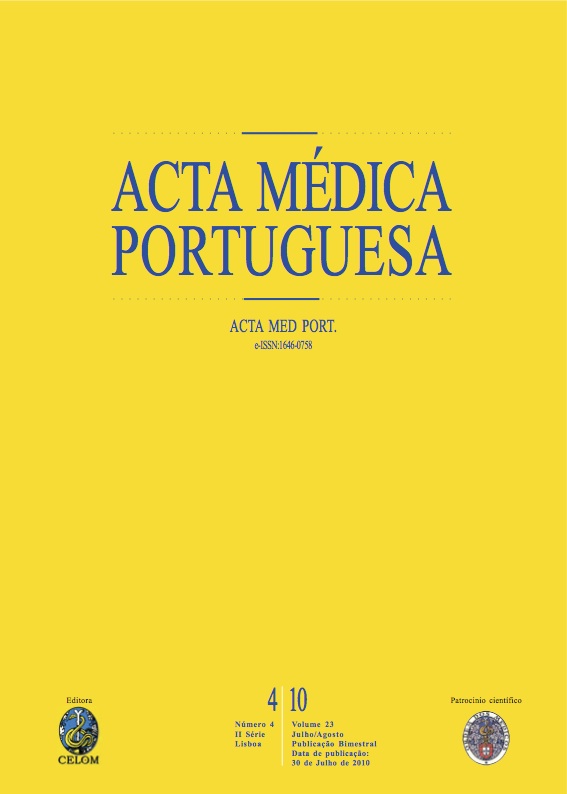Attention deficit hyperactivity disorder (ADHD) in children: neurobiological aspects, diagnosis and therapeutic approach.
DOI:
https://doi.org/10.20344/amp.686Abstract
The attention deficit hyperactivity disorder (ADHD) is usually associated to child development, presenting a strong neurobiological influence and being, thus, mostly common in childhood. This disorder is characterized by a persistent pattern of lack of attention and/or by hyperactivity and impulsivity.To conduct a systematic literature review on ADHD in children, focusing neurobiological aspects, diagnosis and therapeutic approaches. Methodology: This is a literature review about ADHD in childhood, from 1994 through 2008. The neurobiological mechanisms that participate in ADHD are complex, involving the dopaminergic, noradrenergic and serotonergic systems. The diagnosis of ADHD must be based on the clinical behavior, since there is no biological marker defined. Metilfenidate is the main drug used for children's treatment.The search for relief of ADHD symptoms ought to be based on organic treatments, other specific treatments using medications or neurofeedbacks, as well as behavior therapies.Downloads
Downloads
How to Cite
Issue
Section
License
All the articles published in the AMP are open access and comply with the requirements of funding agencies or academic institutions. The AMP is governed by the terms of the Creative Commons ‘Attribution – Non-Commercial Use - (CC-BY-NC)’ license, regarding the use by third parties.
It is the author’s responsibility to obtain approval for the reproduction of figures, tables, etc. from other publications.
Upon acceptance of an article for publication, the authors will be asked to complete the ICMJE “Copyright Liability and Copyright Sharing Statement “(http://www.actamedicaportuguesa.com/info/AMP-NormasPublicacao.pdf) and the “Declaration of Potential Conflicts of Interest” (http:// www.icmje.org/conflicts-of-interest). An e-mail will be sent to the corresponding author to acknowledge receipt of the manuscript.
After publication, the authors are authorised to make their articles available in repositories of their institutions of origin, as long as they always mention where they were published and according to the Creative Commons license.









